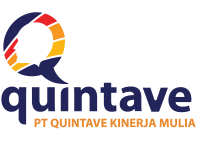In today’s fast-changing workplace, productivity isn’t just about how much employees get done—it’s about how well they’re aligned with business strategy. Too often, organizations struggle to boost performance not because they lack skilled people, but because those people aren’t placed, developed, or supported effectively. This is where strategic talent management becomes a game-changer.
At Quintave Kinerja Mulia, we define talent management as more than hiring and training. It’s about building a structure where individuals grow in roles that match their capacity and where leadership decisions are made based on objective data, not guesswork. Inspired by Dr. Elliott Jaques’ Requisite Organization, we know that productivity happens when role complexity and employee capability are in sync.
Let’s explore how effective talent management directly influences productivity—and how you can implement this in your organization.
Why Talent Management Is a Catalyst for Productivity
Many equate productivity with working harder. But real productivity is about placing the right people in the right roles, with the right tools, development, and direction. Strategic talent management ensures that every individual is working at their optimal level—not underutilized, not overburdened.
When employees feel that their growth is a priority, they invest more of themselves into their work. They become more innovative, more accountable, and more connected to your organization’s mission. This results in:
- Higher performance
- Lower turnover
- Greater engagement
- Faster decision-making
- Resilience to change
In short, strategic talent management doesn’t just boost efficiency. It builds a workplace culture rooted in purpose, trust, and capability.
Common Talent Management Mistakes That Harm Productivity

Despite their best efforts, many companies fail to see a return on their talent management initiatives. According to a Gallup report, fewer than 10% of businesses have clear visibility into their workforce’s real capabilities. Without this data, aligning people to roles is based on instinct—not intelligence.
Other common pitfalls include:
- Rigid talent mobility. Only 20% of organizations can effectively move people into roles where they can thrive.
- Skill gaps with no development plan. Only 23% of companies successfully upskill employees to meet future business needs.
- Lack of forward-looking structures. Many businesses think reactively rather than proactively when managing talent.
Without a holistic, structured approach to talent management, companies risk low engagement, high turnover, and stunted growth.
How Quintave Helps You Optimize Talent Placement
To solve this, Quintave offers a proven approach: Talent Pool Capability and Future Potential. This is our advanced framework for aligning talent with the present and future of your business.
Using the “Manager-once-Removed (MoR)” principle, we ensure that talent development is guided not just by direct supervisors, but by leaders with a broader view of organizational needs. This system allows us to:
- Identify capability gaps across levels.
- Objectively calibrate talent readiness.
- Align role complexity with individual capacity, as emphasized in Requisite Organization.
- Create structured development and promotion plans.
Our talent management approach is strengthened by the Prevue HR System, which brings cognitive, personality, and motivational assessments into decision-making. This eliminates guesswork and gives your organization the confidence to grow with the right people in the right roles.
🔗 Learn more: Prevue HR System – Quintave
Why Quintave’s Talent Management System Is Different

What makes our method unique is how we connect assessment, structure, and strategy. Through tailored consulting, Quintave helps you implement:
- Strategic workforce planning
- Internal mobility pipelines
- Career feedback loops
- Sustainable succession models
By focusing on data-backed, future-focused talent management, we empower your people and protect your organizational agility.
🔗 Explore our consulting: Talent Pool Capability – Quintave
Final Thoughts
Workplace productivity doesn’t happen by chance. It requires an ecosystem where talent is continuously identified, developed, and placed with precision. Talent management is the engine that powers this ecosystem.
With Quintave’s guidance, your organization can turn talent management from a reactive HR function into a strategic advantage—improving performance today and building leadership for tomorrow.
Let us help you unlock the true potential of your workforce.
References:
- Jaques, E. (1989). Requisite Organization. Arlington, VA: Cason Hall & Co.
- Prevue HR System – Global
- Prevue HR System – Quintave
- Talent Pool Capability – Quintave
- Lisa Oakley on LinkedIn – Talent Development & Productivity
- Gartner Research – Talent Management & Org Performance





